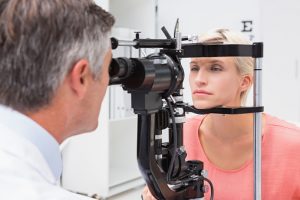
Keratoconus (KC), a distortion of vision: Causes, symptoms, treatment, and exercises
Keratoconus (KC) is a condition that causes vision distortion. It occurs when the normally round cornea becomes thin and cone-shaped. This abnormal change prevents light from entering the eye, hindering the retina’s ability to focus and, thus, distorting the image.
In healthy individuals, light travels through the cornea past the lens to the retina, allowing the brain to create an image. The corneal surface is normally smooth, so light can pass through with ease. In the case of keratoconus, the cornea becomes cone-shaped and its surface irregular, so the passing light is projected as a distorted image.
Here we will further explain the causes, symptoms, and treatment of keratoconus. Continue reading…
This type of vision loss is seen on the side by your eye when you are looking straight ahead, and peripheral vision loss—tunnel vision—can be very difficult to cope with.
Peripheral vision loss is the deterioration of your normal wide-angle field of vision. When someone loses peripheral vision in all directions, it is usually called tunnel vision. Tunnel vision can be attributed to damage to the optic nerve, to the retina, or to areas of the brain that process visual input.
If you research what peripheral vision loss is, you will likely discover a number of causes, but the most common information that will pop up will be about glaucoma peripheral vision loss. While this can be life altering, there are also situations where loss of peripheral vision is temporary. For example, there are some people who experience migraine headaches and report that they have temporary tunnel vision. Continue reading…
Many changes occur as we age. Our skin isn’t as tight anymore, our hearing may fade, and our vision may deteriorate. But growing older doesn’t mean you have to give up on your good health. When it comes to your eyes, for one, there are several natural ways to improve eyesight – no matter how old you are.
Preserving your vision is important to you, there’s no doubt in that, so before you turn to costly drugs or surgery, you’ll definitely want to try these home remedies for good eyesight. Continue reading…
Sudden blurred vision can be a result of numerous health conditions. It can be temporary or chronic and can get worse over time. Sudden blurred vision is usually not accompanied by pain, but other symptoms such as a migraine may be present.
If you’re experiencing blurry vision, objects and people do not appear clearly and sharpness is lost. This condition can affect either one eye or both eyes, depending on the cause. Some people can have blurry vision from birth (in this case, it’s a birth defect) while others develop blurred vision over time.
Sudden blurred vision causes can range in severity, from easily treatable conditions to chronic, life-long complications. Below you will uncover the many different causes of sudden blurred vision along with symptoms and treatment options. Continue reading…
Although it is common to blame aging for many of our ailments, sometimes it isn’t the main culprit. Case in point, there are other causes of your worsening vision aside from aging – and the good news is, they are easily preventable.
Below you will find five common reasons your vision is changing and simple fixes you can try in order to protect your vision. Continue reading…